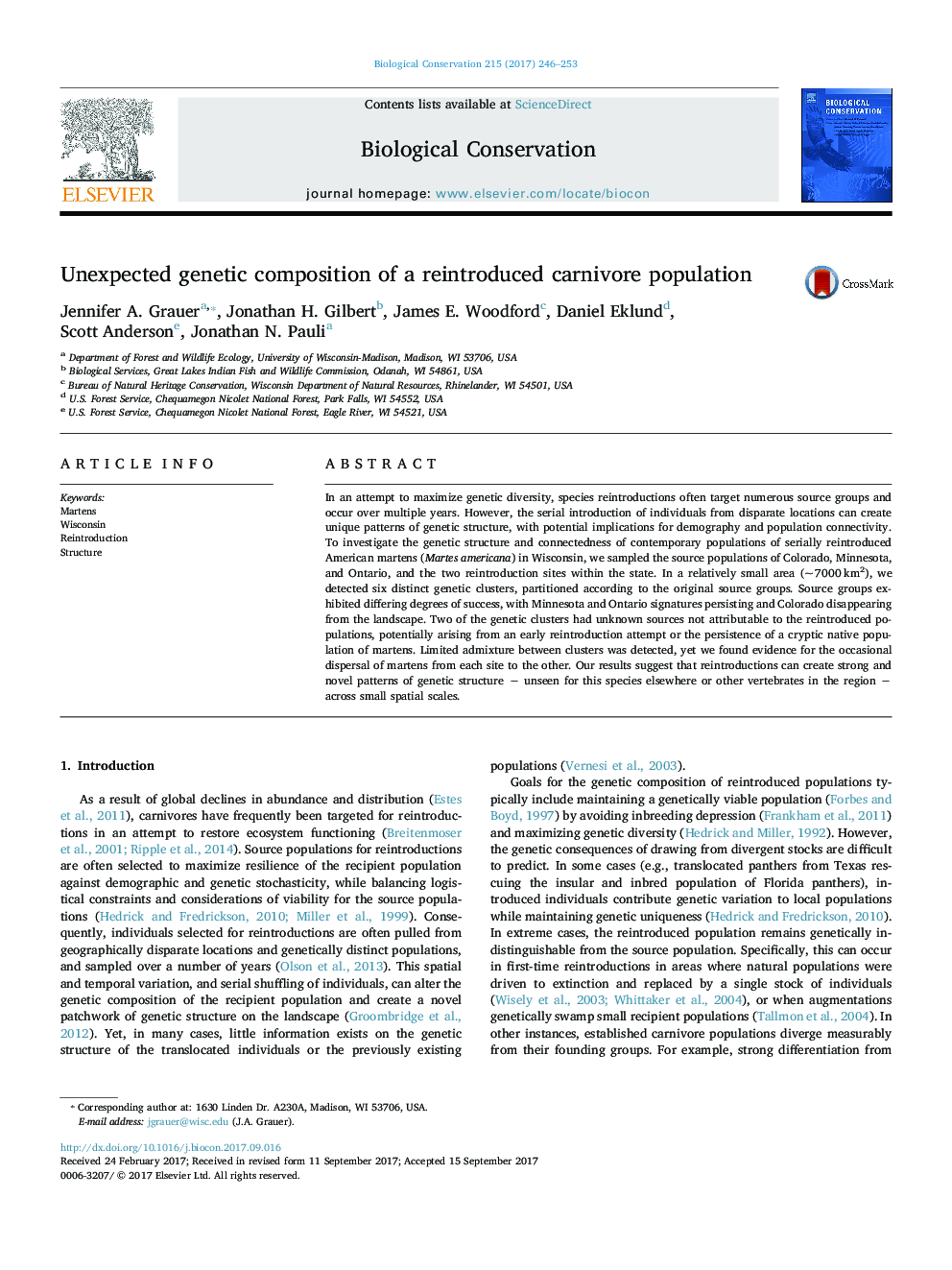| Article ID | Journal | Published Year | Pages | File Type |
|---|---|---|---|---|
| 5743034 | Biological Conservation | 2017 | 8 Pages |
Abstract
In an attempt to maximize genetic diversity, species reintroductions often target numerous source groups and occur over multiple years. However, the serial introduction of individuals from disparate locations can create unique patterns of genetic structure, with potential implications for demography and population connectivity. To investigate the genetic structure and connectedness of contemporary populations of serially reintroduced American martens (Martes americana) in Wisconsin, we sampled the source populations of Colorado, Minnesota, and Ontario, and the two reintroduction sites within the state. In a relatively small area (~Â 7000Â km2), we detected six distinct genetic clusters, partitioned according to the original source groups. Source groups exhibited differing degrees of success, with Minnesota and Ontario signatures persisting and Colorado disappearing from the landscape. Two of the genetic clusters had unknown sources not attributable to the reintroduced populations, potentially arising from an early reintroduction attempt or the persistence of a cryptic native population of martens. Limited admixture between clusters was detected, yet we found evidence for the occasional dispersal of martens from each site to the other. Our results suggest that reintroductions can create strong and novel patterns of genetic structure â unseen for this species elsewhere or other vertebrates in the region â across small spatial scales.
Related Topics
Life Sciences
Agricultural and Biological Sciences
Ecology, Evolution, Behavior and Systematics
Authors
Jennifer A. Grauer, Jonathan H. Gilbert, James E. Woodford, Daniel Eklund, Scott Anderson, Jonathan N. Pauli,
